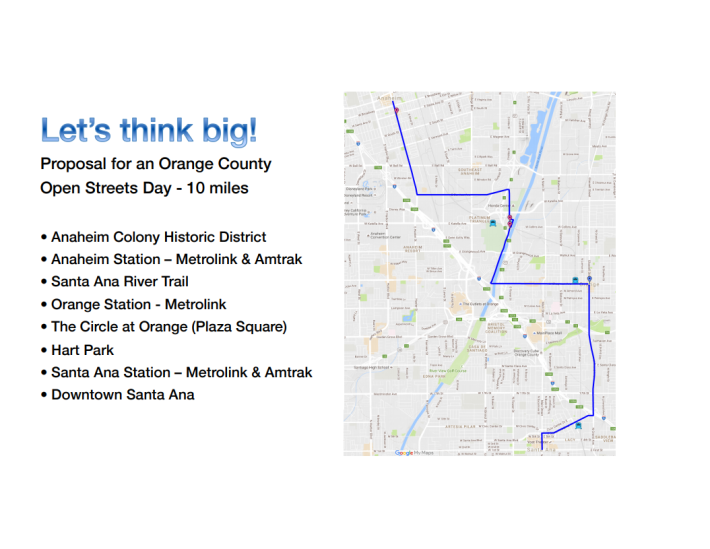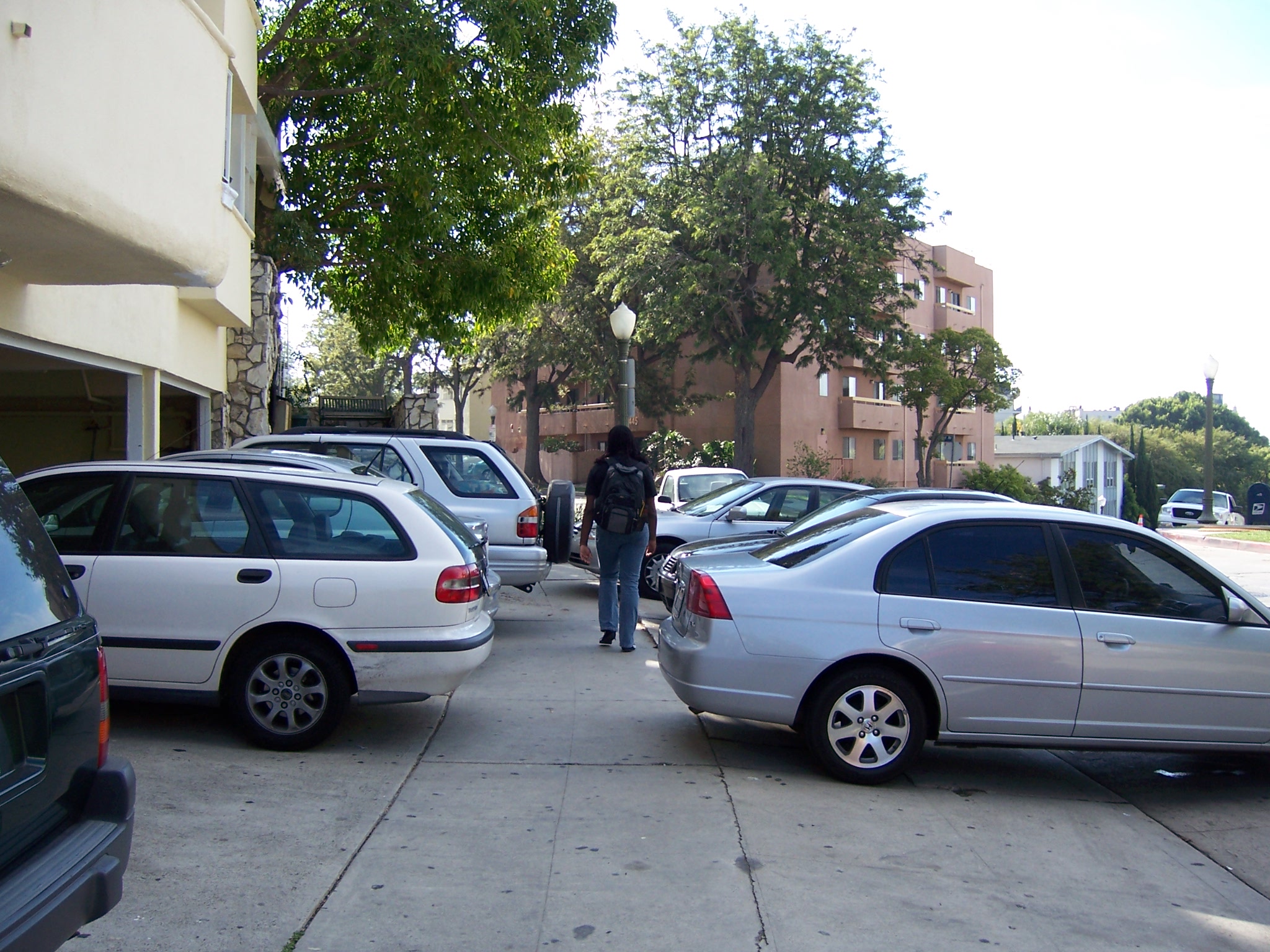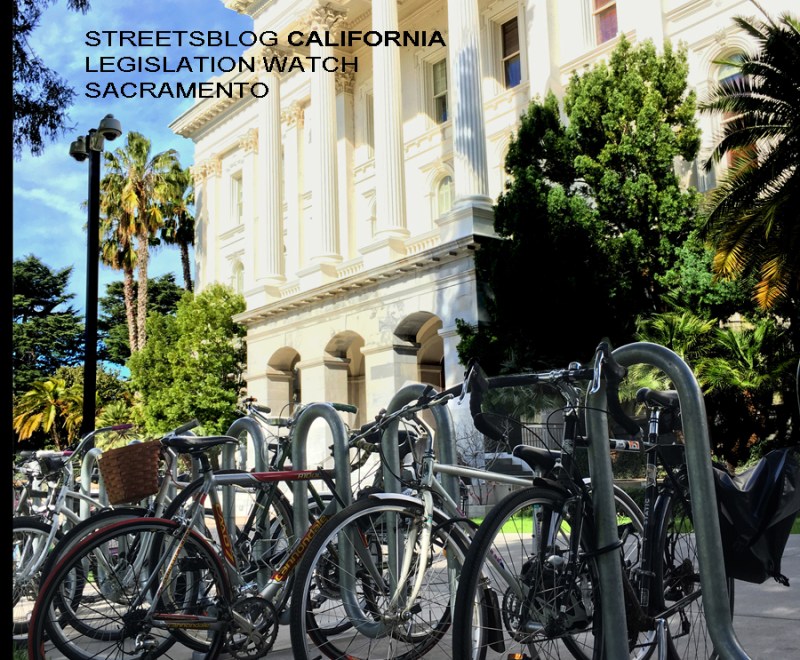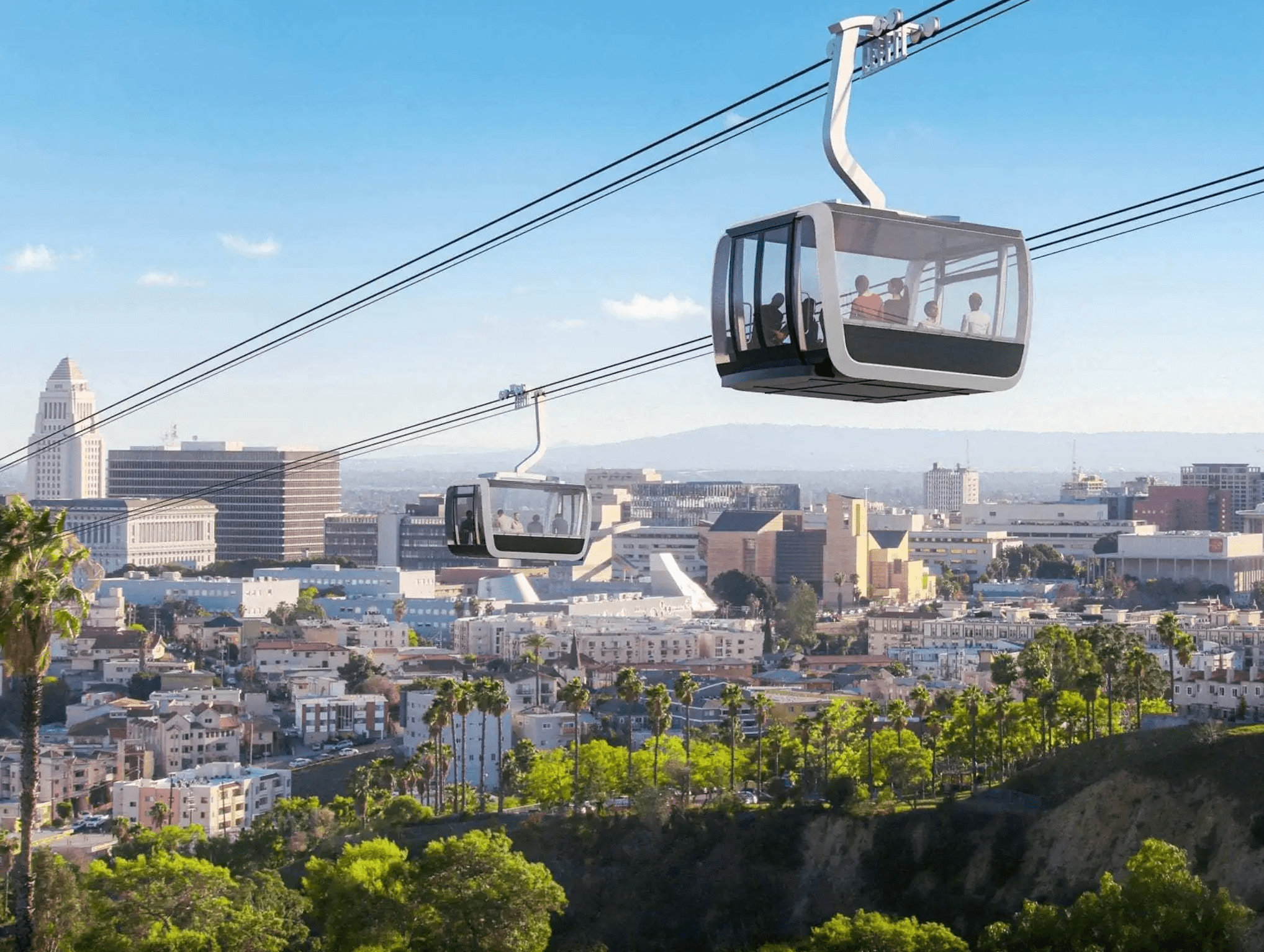Equity lessons fall on deaf ears at Orange County Active Transportation Forum
10:55 AM PST on November 22, 2016

"As far as equity, everyone has a very different definition of equity."
Wait, what?
"If you ask the folks in South Orange County, they say we’re not having equity, [we’re] investing $350 million in the streetcar in Santa Ana. Where’s our $350 million?
You can't be serious . . .
"When you’re asking people in Santa Ana about the streetcar, what that means is issues around property . . . those are market driven issues that will be what they will become."
Please, don't.
"But what I would also say that in closing, I think the urbanization of our County is changing regardless of whether there’s a streetcar project there or not. And those issues around property valuations, and property taxes, those are going to be there regardless. This may accelerate it in some way, but it’s going to occur no matter what."
. . . sigh . . .
Let's back up. I was attending October's Orange County Active Transportation Forum in Garden Grove when Darrell Johnson, CEO of Orange County Transportation Authority was giving his piece of mind about equity. It was the first session of the morning, and leaders from other agencies including the Orange County Council of Governments, Southern California Association of Governments, and Caltrans shared the stage with Johnson.
The whole talk was pretty optimistic stuff: Caltrans District 12 Deputy Director of Planning Lan Zhou talked about their efforts to create an Active Transportation Plan, SCAG Executive Director Hasan Ikhrata showed off the local results of its GoHuman campaign in Westminster and Garden Grove, and OCCOG chair Marika Poynter presented its OC Complete Streets handbook -- a resource that was created to help cities implement Complete Streets ideas in design and policy.
Johnson's presentation honed in on OCTA's effort to make streets more multimodal. He highlighted the more than $73 million OCTA received from federal and state funds for bicycle/pedestrian projects, the 60 percent completion of the 500-mile Regional Bikeways Network, and the agency's planned start next year on a countywide active transportation plan.
Yet, it was a question from Marina Ramirez, a Santa Ana resident and member of Santa Ana Active Streets Coalition, that put the CEO on the defensive.
Marina Ramirez from @SAActiveStreets, asks panel what's being done to address displacement from AT improvements? #OCATForum16
— Kristopher Fortin (@lapaperboy) October 14, 2016
Also follow up question from M Ramirez: @OCTAnews has an AT checklist, what about an equity checklist? #OCATForum16
— Kristopher Fortin (@lapaperboy) October 14, 2016
While Johnson's answer meandered a bit, the focus of his response distanced himself and his agency from any ills that may arise from their transportation projects. Transit and transportation are OCTA's issues, the other things that may happen after the fact are not their problem:
I think it's important to talk about the big picture for the moment and then narrow it down. We live in a county with 3.2 million people, and based upon the plans that are submitted to OCTA and through SCAG about the future, over the next 20 years through no doing of OCTA, what we’re told is that we’ll see housing (prices) increase by 13 or 14 percent. Population will increase by about the same and jobs will increase by about the same. When you model all that together we see congestion in our county at all modes increasing by about 165 percent. So, I look at my job is to figure, our job is to figure how do we address the 165 percent. That’s going to take a whole variety of things. That’s going to take better bus services, better streetcar service, it’s going to take better Metrolink service, better Active Transportation. But there’s no one size fits all, so we want to work through that in any given manner.
Someone asked me, well, what if you’re wrong, what if it’s not 165 percent. Well, even if we’re half right, and it’s only 85 percent, that’s a lot of congestion to sort of deal with. So we’re trying to look at all these different toolboxes with that.
A recent example is the City of Santa Ana has asked us to look at some removal of lanes on a highway* (they call streets not on freeways, highways, yup). So unintended consequences, this idea of taking out a lane in traffic and replacing it with active transportation is an idea that they have, it’s an idea we’re not opposed to, but an unintended consequence is the severe impact on the frequent of transit service on that corridor, bus transit service. So when we’re taking people that are used to riding the bus, making a trip from point A to point B in 30 minutes and because of the increased traffic congestion, reduction of lane, not being able to get to the near side, that 30 minutes becomes 90 minutes or 80 minutes.
So we’re working through that so we can understand all users there and how do we look at opportunities for sharing and looking at opportunities for making sure that there's not winners, there’s not losers. So there’s push and pull on that. I’m not even talking about automobile traffic, that’s an obvious. But this idea that bus transit users which are a very important constituency in the urban part of our county, how do they not get a part.
As far as equity, everyone has a very different definition of equity. If you ask the folks in South Orange County, they say we’re not having equity, you’re investing $350 million in the streetcar in Santa Ana. Where’s our $350 million? When you’re asking people in Santa Ana about the streetcar, what that means is issues around property . . . those are market driven issues that will be what they will become. We’re working hard to ensure that when the construction activities occur that the businesses and community know what they are, then the built-in becomes a part of their community. And there's been broad broad support in Santa Ana and Garden Grove community for this next step and looking at what that is. So we’re trying to accommodate the needs of the current and the needs of the future.
But what I would also say that in closing, I think the urbanization of our County is changing regardless of whether there’s a streetcar project there or not. And those issues around property valuations, and property taxes, those are going to be there regardless. This may accelerate it in some way, but it’s going to occur no matter what.
SCAG's Ikhrata backed up Johnson, but based on his answer there was a difference, and it was him being more sympathetic to folks displaced by City changes:
"I think gentrification is an issue that our society and our region needs to deal with, because of unintended consequences like Darrel said," Ikhrata said. "There is no perfect solution out there, but I think we do need to make an effort to make sure that whatever we do we don’t make it difficult for the people who live there all their lives, or their kids, . . . to continue doing the same."
Anaheim residents were an active voice throughout the forum. Youth from Anaheim High School that were a part of AHOC’s Active Transportation Leadership Program were vocal about displacement, whether it was about housing or adaptive reuse projects.
Anaheim High student calling out cookie cutter design of aff. housing shown by C&C Development. #ATForum2016
(Reason why Equity answer was so shocking)
Other Takeaways:
North Orange County Ciclovia

.@aaronpaley wraps up with challenge: to do a 10-mile open streets even in North Orange County. "We gotta think big." #ATforum2016
Paley invites crowd to go to Sunday's @CicLAvia. "You can do something for a couple of hours and make a huge difference." #ATforum2016
Westminster is making moves
Santa Ana, Garden Grove get’s a lot of the AT love, but other communities like Westminster are making strides
Westminster CM Diana Carey: resident led effort to prioritize where bike lanes go into city. #ATforum2016
#ShaheenSadeghi, who created the Anaheim Packing House, OC Lab, etc, drops nuts on crowds face about how to do shit
Favorite tweet of the day:
Reminded that I'm a Cultural Engineer not Traffic Engineer #atforum2016 @GoHumanSoCal
— Paul Martin (@pablitoway) October 14, 2016
Stay in touch
Sign up for our free newsletter
More from Streetsblog California
Thursday’s Headlines
CA youth speak out on climate: How LA Metro plans to spend $ from canceled 710 freeway; Watch out, illegal SF parkers, tickets are coming; More
Legislators Tackle AV, School Zone Safety
Are AVs freight trucks ready to be deployed on California roads with no one in them?
Metro Looks to Approve Torrance C Line Extension Alignment
Selecting the relatively low-cost hybrid alternative should help the oft-delayed South Bay C Line extension move a step closer to reality
What to Say When Someone Claims ‘No One Bikes or Walks in Bad Weather’
Yes, sustainable modes are more vulnerable to bad weather. But that's why we should invest more in them — not less.
Wednesday’s Headlines
Road project leaves Half Moon Bay residents without access; Kern County residents concerned about a carbon capture plan; Who works from home in the Bay Area? More




